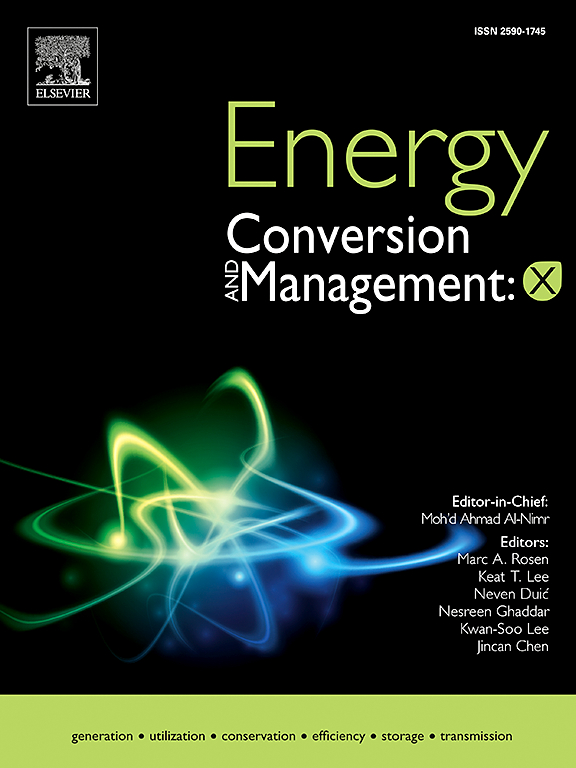利用光伏创新:全球可持续发展的进步、挑战和战略路径
IF 7.6
Q1 ENERGY & FUELS
引用次数: 0
摘要
本系统综述在全球可持续发展的背景下,对太阳能光伏(PV)技术的进步和未解决的挑战进行了关键的综合。由于迫切需要脱碳能源系统和解决化石燃料依赖的局限性,该研究系统地考察了光伏电池效率、材料创新和能源存储集成方面的最新发展。采用结构化方法,对2020年至2025年间发表的同行评议文章和技术报告进行文献检索,使用Scopus、Web of Science和IEEE explore数据库中定义的纳入标准。重点是与实验室规模效率相关的实际性能差距,光伏制造和处置的生命周期环境影响,以及与稀土和半导体材料相关的关键供应链脆弱性。该分析还评估了社会技术维度,如电网整合、社区对公用事业规模项目的抵制以及区域政策框架。研究结果强调,虽然技术创新继续推动成本降低和可扩展性,但必须通过协调政策、投资和研究举措来解决系统性障碍,特别是在能源存储、回收和基础设施兼容性方面。报告总结了在联合国可持续发展目标(sdg)下加强光伏部署的研究差距和前瞻性战略,特别关注能源公平、气候适应能力和循环经济原则。本文章由计算机程序翻译,如有差异,请以英文原文为准。

Harnessing photovoltaic innovation: Advancements, challenges, and strategic pathways for sustainable global development
This systematic review provides a critical synthesis of advancements and unresolved challenges in solar photovoltaic (PV) technology within the context of global sustainability imperatives. Motivated by the pressing need to decarbonize energy systems and address the limitations of fossil fuel dependence, the study systematically examines state-of-the-art developments in PV cell efficiency, material innovations, and energy storage integration. A structured methodology was employed, encompassing a literature search of peer-reviewed articles and technical reports published between 2020 and 2025, using defined inclusion criteria across Scopus, Web of Science, and IEEE Xplore databases. Emphasis is placed on real-world performance gaps relative to laboratory-scale efficiencies, lifecycle environmental impacts of PV manufacturing and disposal, and critical supply chain vulnerabilities related to rare earth and semiconductor materials. The analysis also evaluates socio-technical dimensions such as grid integration, community resistance to utility-scale projects, and regional policy frameworks. Findings highlight that while technological innovation continues to drive cost reductions and scalability, systemic barriers, especially in energy storage, recycling, and infrastructure compatibility, must be addressed through coordinated policy, investment, and research initiatives. The review concludes with identified research gaps and forward-looking strategies for enhancing PV deployment under the United Nations Sustainable Development Goals (SDGs), with particular focus on energy equity, climate resilience, and circular economy principles.
求助全文
通过发布文献求助,成功后即可免费获取论文全文。
去求助
来源期刊

Energy Conversion and Management-X
Multiple-
CiteScore
8.80
自引率
3.20%
发文量
180
审稿时长
58 days
期刊介绍:
Energy Conversion and Management: X is the open access extension of the reputable journal Energy Conversion and Management, serving as a platform for interdisciplinary research on a wide array of critical energy subjects. The journal is dedicated to publishing original contributions and in-depth technical review articles that present groundbreaking research on topics spanning energy generation, utilization, conversion, storage, transmission, conservation, management, and sustainability.
The scope of Energy Conversion and Management: X encompasses various forms of energy, including mechanical, thermal, nuclear, chemical, electromagnetic, magnetic, and electric energy. It addresses all known energy resources, highlighting both conventional sources like fossil fuels and nuclear power, as well as renewable resources such as solar, biomass, hydro, wind, geothermal, and ocean energy.
 求助内容:
求助内容: 应助结果提醒方式:
应助结果提醒方式:


